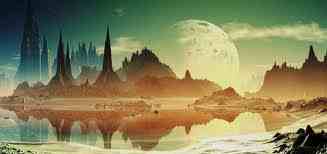 |
|
|||
|
|
Writing in gothic fiction
excess |
The language of terror is dedicated to an endless expense, even though it only seeks to achieve a single effect. It drives itself out of any possible resting place. Sade and the novels of terror introduce an essential imbalance within works of language: they force them of necessity to be always excessive and deficient. ( Michel Faucault, 'Language to infinity')
|
||
|
Gothic signifies a writing of excess. It appears in the awful obscurity that haunted eighteenth-century rationality and morality. It shadows the despairing ecstasies of Romantic idealism and individualism and the uncanny dualities of Victorian realism and decadence. Gothic atmospheres - gloomy and mysterious - have repeatedly signalled the disturbing returns of pasts upon presents and evoked emotions of terror and laughter. In the twentieth century Gothic writing remains fascinated by objects and practices that are constructed as negative , irrational , immoral and fantastic. Gothic excesses the fascination with transgression and the anxiety over cultural limits and boundaries , continue to produce ambivalent emotions and meanings in their tales of darkness, desire and power. In Gothic Fiction certain stock features provide the principal embodiments and evocation of cultural anxieties. These anxieties varied according to diverse changes: political revolution, industrialization, urbanization, shifts in sexual and domestic organization, and scientific discovery. In Gothic productions imagination and emotional effects exceed reason. Associated with wildness, it signified an over-abundance of imaginative frenzy, untamed by reason and unrestrained by conventional eighteenth-century demands for simplicity, realism or probability. It signified a trend towards an aesthetics based on feeling and emotion and associated primarily with the sublime. Gothic excesses transgressed the proper limits of aesthetic as well as social order in the overflow of emotions that undermined boundaries of life and fiction, fantasy and reality. Uncertainties about the nature of power, law, society, family and sexuality dominate Gothic fiction. They are linked to wider threats of disintegration manifested most forcefully in political revolution. The excesses of political meaning display the ambivalence of Gothic. This ambivalence is manifested in terms of the genre's affiliations with class.
|
||||
|
|
 |
 |
||










